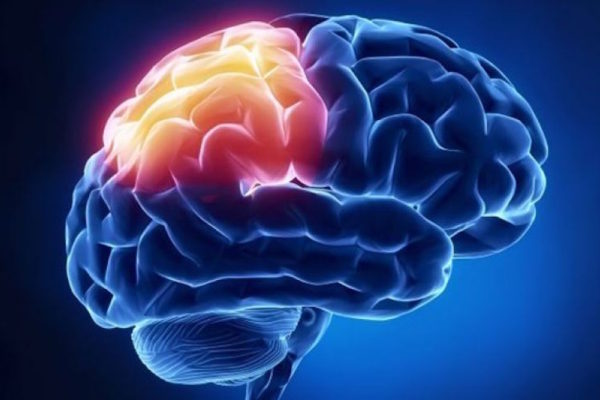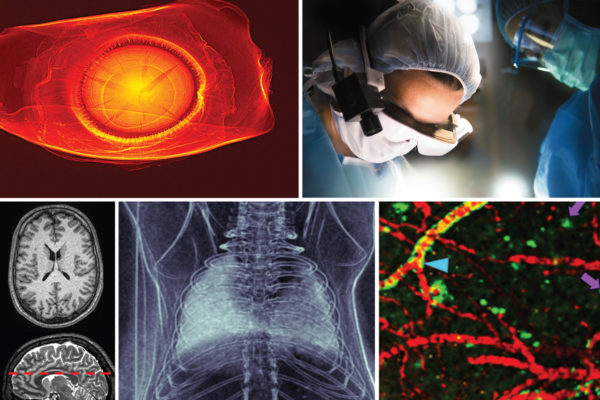Researchers to model brain’s memory network
Washington University in St. Louis brain scholars will join teams from four other universities in a five-year, $7.5 million research project that aims to build and test the most comprehensive model yet of how people understand and remember events.
Investing $25 million in imaging sciences
Washington University in St. Louis is launching a bold $25 million initiative over the next five years to develop innovative technologies aimed at improving science and medicine worldwide. The Imaging Sciences Initiative – a partnership between the School of Engineering & Applied Science and the School of Medicine – will support the development of new imaging technologies to diagnose and treat disease as well as study intricate biological structures, metabolism and physiology, and critical molecular and cellular processes.
Exploring a new way to diagnose mental illness
A new study at the School of Medicine is focused on understanding how the pathways identified by the Human Connectome Project differ in people with psychiatric illnesses. Principal investigator Daniel Mamah, MD, said the group’s goal is to look at diagnosing psychiatric illness in a different way.
‘Chemobrain’ linked to disrupted brain networks
Patients who experience ‘chemobrain’ following treatment for breast cancer show disruptions in brain networks that are not present in patients who do not report cognitive difficulties, according to School of Medicine researchers.
Study to analyze brains of kids with rare disorder
School of Medicine researchers have received a five-year, $2.7 million grant to detect and analyze differences in the brains of children with a rare illness, Wolfram syndrome. The disorder includes a severe form of diabetes, hearing and vision loss and kidney problems. Patients also eventually lose muscle control and coordination from brain degeneration.
Imaging pinpoints brain regions that ‘see the future’
Comparing images of brain activity in response to the “self-remember,” left, and “self-future” event cues, researchers found a surprisingly complete overlap among regions of the brain used.Using brain imaging, researchers from Washington University in St. Louis have identified several brain regions that are involved in the uniquely human ability to envision future events. The study, to be published in the journal PNAS, provides evidence that memory and future thought are highly interrelated and helps explain why future thought may be impossible without memories. Findings suggest that envisioning the future may be a critical prerequisite for many higher-level planning processes.
Brain imaging identifies best memorization strategies, details differing parts of brain used in each
How would you remember this strange image?A psychologist at Washington University in St. Louis is shedding new light on strategies people use to learn and then remember images, showing that some techniques are more effective than others. Brenda Kirchoff, Ph.D., WUSTL research associate in psychology in Arts & Sciences, used functional magnetic reasonance imaging to identify four major learning and memory strategies that range from visual to verbal, each relying on different parts of the brain. The findings eventually may help provide behavioral modification treatments for individuals with memory impairment, including adults afflicted with age-related memory loss and early onset Alzheimer’s disease.
Working memory key to breakthroughs in cognitive neuroscience
Unraveling the mysteries of the human brain, and the mind it gives rise to, is within the reach of modern science, suggests a forthcoming issue of the journal Neuroscience. The special issue explores how sophisticated working memory processes — from the firing of a single neuron to the activation of multiple brain regions — help shape our understanding of the world, says issue co-editor Grega Repovs, a visiting post-doctoral fellow at Washington University in St. Louis.
Working memory key to breakthroughs in cognitive neuroscience
Unraveling the mysteries of the human brain, and the mind it gives rise to, is within the reach of modern science, suggests a forthcoming issue of the journal Neuroscience. The special issue explores how sophisticated working memory processes — from the firing of a single neuron to the activation of multiple brain regions — help shape our understanding of the world, says issue co-editor Grega Repovs, a visiting post-doctoral fellow at Washington University in St. Louis. More…
Working memory key to breakthroughs in cognitive neuroscience
Unraveling the mysteries of the human brain, and the mind it gives rise to, is within the reach of modern science, suggests a forthcoming issue of the journal Neuroscience. The special issue explores how sophisticated working memory processes — from the firing of a single neuron to the activation of multiple brain regions — help shape our understanding of the world, says issue co-editor Grega Repovs, a visiting post-doctoral fellow at Washington University in St. Louis. More…
View More Stories


